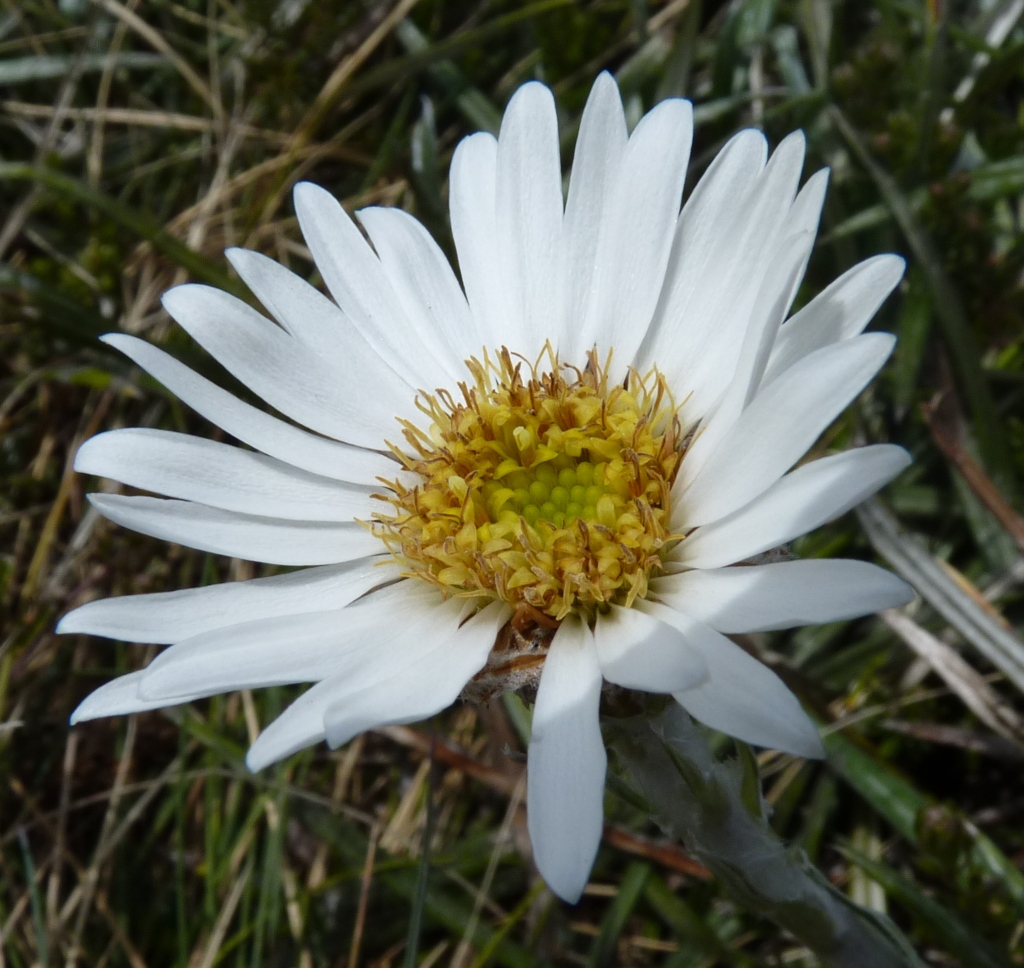Celmisia
Perennial subshrubs or woody-based or rhizomatous herbs. Leaves usually forming a dense rosette, subsessile with a broad sheath, entire, sometimes obscurely toothed, lamina usually densely tomentose below, with thin membranous coating (pellicle) or glandular above, rarely sericeous. Inflorescence a single capitulum, radiate, solitary on a long bracteate scape; receptacle surface alveolate. Involucral bracts multiseriate; ray florets 1-seriate, prominently ligulate, female, white (rarely flushed mauve or pale-yellow), style bifid, papillose, staminodes absent; disc florets tubular, bisexual, yellow, anthers long-sagittate at base, filament connective produced into sterile tip, style branches flattened, apically tapered, papillose. Cypselas compressed, ribbed, glabrous or with glandular or eglandular hairs; pappus bristles scabrous, unequal, free.
About 70 species, endemic to New Zealand and south-eastern Australia, mostly alpine; 10 species in Australia (South American species previously referred to Celmisia are now placed in Oritrophium). All Victorian species other than C. sericophylla have been referred previously to C. asteliifolia Hook. f. (endemic in Tasmania) and/or C. longifolia Cass. (endemic in the Blue Mountains of New South Wales).
Many species of Celmisia have high horticultural value.
Gray, M.; Given, D. (1999). Celmisia. In: Walsh, N.G.; Entwisle, T.J., Flora of Victoria Vol. 4, Cornaceae to Asteraceae, pp. 912–916. Inkata Press, Melbourne.
 Spinning
Spinning
